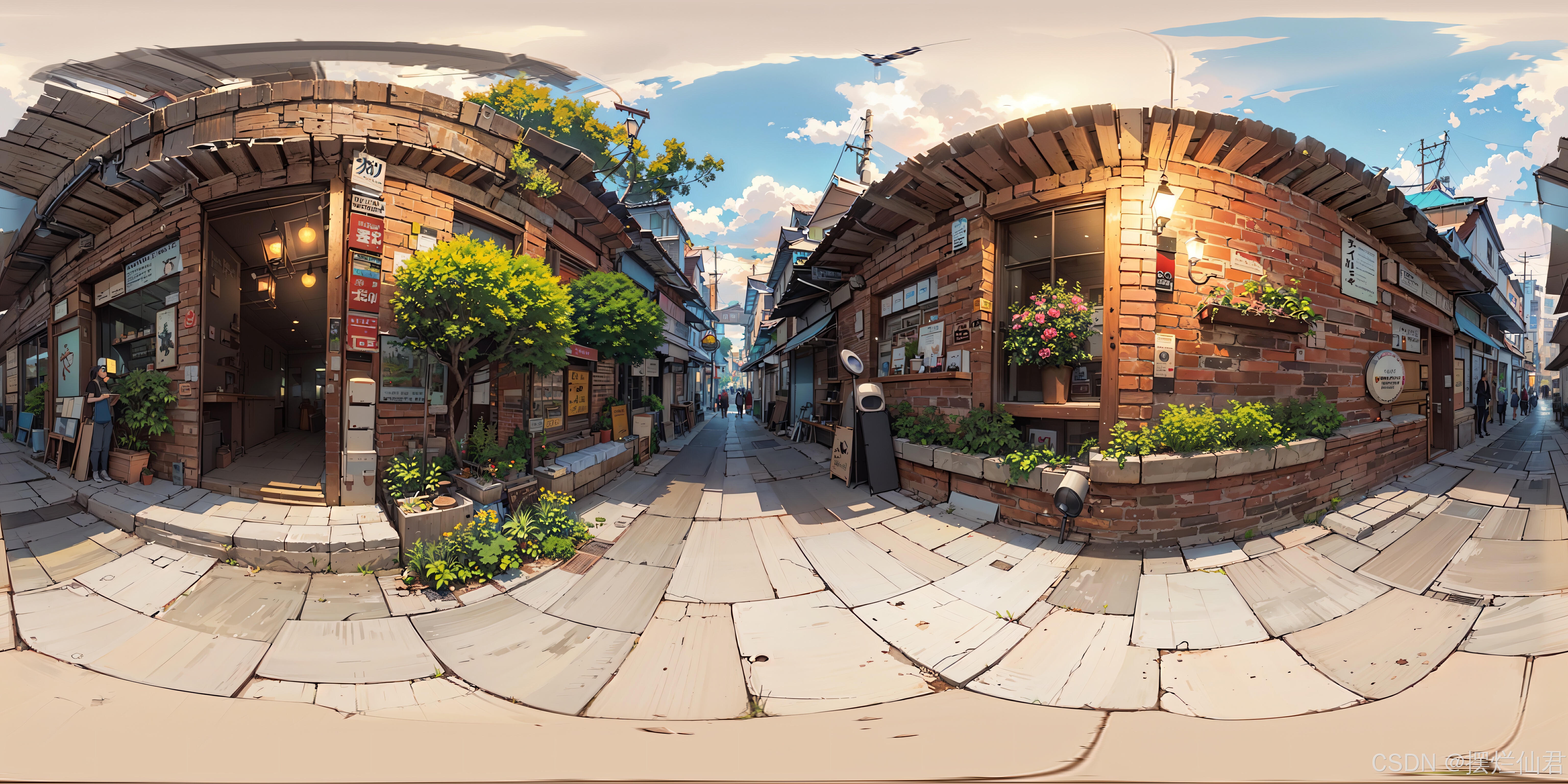????????在這個教程中,您將學習如何使用Python和深度學習技術來調整圖像的分辨率。我們將從基礎的圖像處理技術開始,逐步深入到使用預訓練的深度學習模型進行圖像超分辨率處理。

一、常規修改方法
1. 安裝Pillow庫
首先,你需要確保你的Python環境中已經安裝了Pillow庫。如果還沒有安裝,可以通過以下命令安裝:
pip install Pillow2. 導入Pillow庫
在你的Python腳本中,導入Pillow庫中的Image模塊:
from PIL import Image3. 打開圖片
使用Image.open()函數打開你想要修改分辨率的圖片:
img = Image.open("path_to_your_image.jpg")請將"path_to_your_image.jpg"替換為你的圖片文件的實際路徑。
4. 設置新的分辨率
定義新的寬度和高度。例如,如果你想將圖片的尺寸加倍,可以這樣做:
new_width = img.width * 2
new_height = img.height * 25. 修改圖片分辨率
使用resize()函數來修改圖片的分辨率。你可以指定一個新的尺寸元組(寬度,高度),并選擇一個濾鏡來保持圖片質量:
resized_img = img.resize((new_width, new_height), Image.ANTIALIAS)Image.ANTIALIAS是一個高質量的下采樣濾鏡,適用于放大圖片。
6. 保存修改后的圖片
最后,使用save()函數保存修改后的圖片:
resized_img.save("path_to_save_new_image.jpg")將"path_to_save_new_image.jpg"替換為你想要保存新圖片的路徑。
7.完整代碼示例
將以上步驟合并,我們得到以下完整的代碼示例:
from PIL import Image# 打開圖片
img = Image.open("path_to_your_image.jpg")# 設置新的分辨率大小
new_width = img.width * 2 # 例如,將寬度放大兩倍
new_height = img.height * 2 # 將高度放大兩倍# 使用ANTIALIAS濾鏡來保持圖片質量
resized_img = img.resize((new_width, new_height), Image.ANTIALIAS)# 保存新的圖片
resized_img.save("path_to_save_new_image.jpg")8.注意事項
- 放大圖片可能會導致圖片質量下降,尤其是當放大比例較大時。
ANTIALIAS濾鏡可以幫助減少這種影響,但最好的結果通常需要更復雜的圖像處理技術。 - 如果你需要縮小圖片,也可以使用相同的方法,只需設置新的寬度和高度小于原始尺寸即可。
二、深度學習方法
使用深度學習來增加圖片分辨率是一個相對復雜的過程,因為它涉及到神經網絡模型的訓練和應用。下面是一個簡化的教程,介紹如何使用深度學習來增加圖片分辨率,我們將使用Python和PyTorch框架,以及一個預訓練的模型作為例子。
1. 安裝PyTorch和相關庫
首先,確保你已經安裝了PyTorch。你可以訪問PyTorch的官方網站來獲取安裝指令:PyTorch官網。安裝PyTorch后,你還需要安裝torchvision和Pillow庫:
pip install torch torchvision Pillow2. 導入必要的庫
在你的Python腳本中,導入以下必要的庫:
import torch
from torchvision import transforms
from PIL import Image3. 加載預訓練模型
我們將使用torchvision.models中的一個預訓練的模型。這里我們使用rationale模型,它是一個用于圖像超分辨率的模型。
import torchvision.models as models# 加載預訓練的模型
model = models.rationale(pretrained=True)
model.eval() # 設置為評估模式4. 準備圖片
將圖片加載為PIL圖像,然后轉換為PyTorch張量:
# 打開圖片
img = Image.open("path_to_your_image.jpg").convert('RGB')# 轉換為PyTorch張量
transform = transforms.Compose([transforms.ToTensor(),
])
img_tensor = transform(img).unsqueeze(0) # 添加批次維度5. 應用模型
將圖片張量傳遞給模型,并獲取輸出:
# 應用模型
with torch.no_grad(): # 不需要計算梯度output = model(img_tensor)6. 保存結果
將模型的輸出轉換回PIL圖像,并保存:
# 將輸出轉換回PIL圖像
output = output.squeeze(0) # 移除批次維度
output_img = transforms.ToPILImage()(output)# 保存圖片
output_img.save("path_to_save_new_image.jpg")7.完整代碼示例
將以上步驟合并,我們得到以下完整的代碼示例:
import torch
from torchvision import transforms, models
from PIL import Image# 加載預訓練的模型
model = models.rationale(pretrained=True)
model.eval()# 打開圖片并轉換為張量
img = Image.open("path_to_your_image.jpg").convert('RGB')
transform = transforms.Compose([transforms.ToTensor(),
])
img_tensor = transform(img).unsqueeze(0)# 應用模型
with torch.no_grad():output = model(img_tensor)# 將輸出轉換回PIL圖像并保存
output = output.squeeze(0)
output_img = transforms.ToPILImage()(output)
output_img.save("path_to_save_new_image.jpg")8.注意事項
- 這個例子使用的是一個預訓練的模型,它可能不是專門為超分辨率訓練的,因此結果可能不如專門的超分辨率模型。
- 深度學習模型通常需要大量的計算資源,特別是在訓練階段。使用預訓練模型可以減少這些需求。
- 這個例子沒有涉及到模型的訓練過程,因為訓練一個深度學習模型是一個復雜且耗時的過程,需要大量的數據和計算資源。
三、更復雜情況的圖像調整
? ?1.方法講解? ? ?
在這個示例中,我們將使用torchvision.transforms模塊中的Resize函數來調整圖像大小。這個模塊提供了多種插值方法,包括最近鄰插值、雙線性插值和雙三次插值等。
import torch
from torchvision import transforms
from PIL import Image# 打開圖像
img_path = "path_to_your_image.jpg"
img = Image.open(img_path)# 定義不同的插值方法
# 最近鄰插值
nearest_transform = transforms.Compose([transforms.Resize((256, 256), interpolation=transforms.InterpolationMode.NEAREST),transforms.ToTensor()
])# 雙線性插值
bilinear_transform = transforms.Compose([transforms.Resize((256, 256), interpolation=transforms.InterpolationMode.BILINEAR),transforms.ToTensor()
])# 雙三次插值
bicubic_transform = transforms.Compose([transforms.Resize((256, 256), interpolation=transforms.InterpolationMode.BICUBIC),transforms.ToTensor()
])# 應用插值方法并轉換為張量
nearest_img = nearest_transform(img)
bilinear_img = bilinear_transform(img)
bicubic_img = bicubic_transform(img)# 打印輸出張量的形狀以確認尺寸
print("Nearest Neighbor:", nearest_img.shape)
print("Bilinear:", bilinear_img.shape)
print("Bicubic:", bicubic_img.shape)2.代碼解釋
- 圖像加載:使用
PIL.Image.open函數加載圖像。 - 定義插值方法:使用
transforms.Resize定義不同的插值方法,包括最近鄰、雙線性和雙三次插值。 - 應用插值方法:將定義的插值方法應用到圖像上,并轉換為PyTorch張量。
四、超分辨率處理
以下是一個使用PyTorch和ESPCN(Efficient Sub-Pixel Convolutional Neural Network)模型的示例,這是一個輕量級的超分辨率模型,適合用于圖像的放大和質量提升。
1.安裝必要的庫
首先,確保您已經安裝了PyTorch和相關的庫。如果還沒有安裝,可以使用以下命令:
pip install torch torchvision2.ESPCN模型代碼
以下是使用ESPCN模型進行圖像超分辨率的完整代碼:
import torch
from torch import nn
from torch.nn import functional as F
from torchvision import transforms
from PIL import Image# 定義ESPCN模型
class ESPCN(nn.Module):def __init__(self, num_filters=64, upscale_factor=2):super(ESPCN, self).__init__()self.conv1 = nn.Conv2d(3, num_filters, kernel_size=3, padding=1)self.conv2 = nn.Conv2d(num_filters, num_filters, kernel_size=3, padding=1)self.conv3 = nn.Conv2d(num_filters, 3 * upscale_factor ** 2, kernel_size=3, padding=1)self.pixel_shuffle = nn.PixelShuffle(upscale_factor)def forward(self, x):x = F.relu(self.conv1(x))x = F.relu(self.conv2(x))x = self.pixel_shuffle(self.conv3(x))return x# 初始化模型
model = ESPCN(upscale_factor=2) # 假設我們要將圖像放大2倍
model.load_state_dict(torch.load('espcn.pth')) # 加載預訓練的模型權重
model.eval()# 圖像預處理
preprocess = transforms.Compose([transforms.ToTensor(),transforms.Normalize(mean=[0.485, 0.456, 0.406], std=[0.229, 0.224, 0.225])
])# 加載圖像
img_path = "path_to_your_image.jpg"
img = Image.open(img_path)
img = img.resize((img.width // 2, img.height // 2)) # 首先將圖像縮小2倍
img_tensor = preprocess(img).unsqueeze(0) # 增加批次維度# 使用ESPCN模型進行超分辨率
with torch.no_grad():sr_img = model(img_tensor).squeeze(0)# 圖像后處理
postprocess = transforms.Compose([transforms.Normalize(mean=[-0.485/0.229, -0.456/0.224, -0.406/0.225], std=[1/0.229, 1/0.224, 1/0.225]),transforms.ToPILImage()
])# 將超分辨率后的圖像張量轉換回PIL圖像并保存
sr_img = postprocess(sr_img)
sr_img.save("upsampled_image.jpg")3.代碼解釋
- ESPCN模型定義:定義了一個簡單的ESPCN模型,它包含三個卷積層和一個像素洗牌層(PixelShuffle)來實現上采樣。
- 模型初始化和權重加載:初始化ESPCN模型并加載預訓練的權重。這里假設您已經有了一個預訓練的權重文件
espcn.pth。 - 圖像預處理:定義了一個預處理流程,包括轉換為張量和歸一化。
- 圖像加載和縮小:加載圖像,并首先將其縮小2倍,這是因為ESPCN模型是用于將低分辨率圖像放大的。
- 超分辨率:將預處理后的圖像通過ESPCN模型進行超分辨率處理。
- 圖像后處理:定義了一個后處理流程,包括反歸一化和轉換回PIL圖像。
- 保存圖像:將超分辨率后的圖像保存到文件。
請注意,這個代碼示例假設您已經有了一個預訓練的ESPCN模型權重文件。如果您沒有這個文件,您需要自己訓練模型或者從網上找到相應的預訓練權重。此外,您可能需要根據您的具體需求調整模型結構和參數。



)















)